 |
The History of Council Housing |
  |
|
|
7 Pushing the Boundaries and Housing All
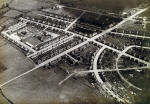 |
Another feature of the post-war expansion of council housing during
the 1950s and 1960s was the development of more new peripheral estates
on or close to the edge of the cities. By this time most inner city
potential building sites had been exhausted and faced with growing
waiting lists of people needing housing councils turned to the
peripheries. Sometimes city boundaries were expanded to embrace these
new estates. Peripheral expansion was partly about rehousing people from
the congested inner city areas where redevelopment was taking place, and
partly about responding to the sheer growth in demand for housing during
the ‘baby boom’ period up until the 1970’s. |
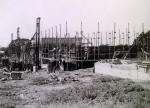 |
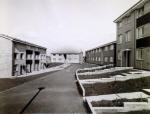 |
A common difficulty for new residents on these surburb estates was
the distance from the city centre and often inadequate bus service.
People were often moved in before roads and pavements were finished.
Many had to contend with thick mud and a feeling of isolation in their
new community. Schools, shops and other facilities on the new estates
were slow to follow but at least the councils were prepared to discuss
the inclusion of public houses in their plans by now! The majority new
homes built on these estates were typical two story houses, but there
was also a significant amount of high-rise building - mainly as a result
of the higher subsidy available and also as a result of architectural
fashion. It was hoped these flats could meet the growing demand for
accommodation from other types of households - smaller families, young
couples and the elderly population. |
 |
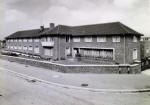 |
Housing provision for the elderly population had historically been
met by charitable means. Almshouses, mostly built during the nineteenth
century, provided a resting home for the fortunate few who were offered
accommodation, alternatively many older people ended up in workhouses or
institutional accommodation. The issue of meeting the housing needs for
the elderly population began to be considered seriously by local
councils by the 1940s. It was believed that the duty of making housing
provision for older people must be the responsibility of the council and
purpose built elderly housing like those shown on the left should be
included in the programme of building. In 1946 the number of pensioners
in Britain was over 4,000,000 and it was admitted that only a fraction
had access to suitable accommodation. Up until this time, most councils
had concentrated on building family homes, largely in the new suburban
estates. |
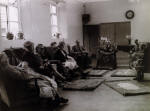 |
|
|